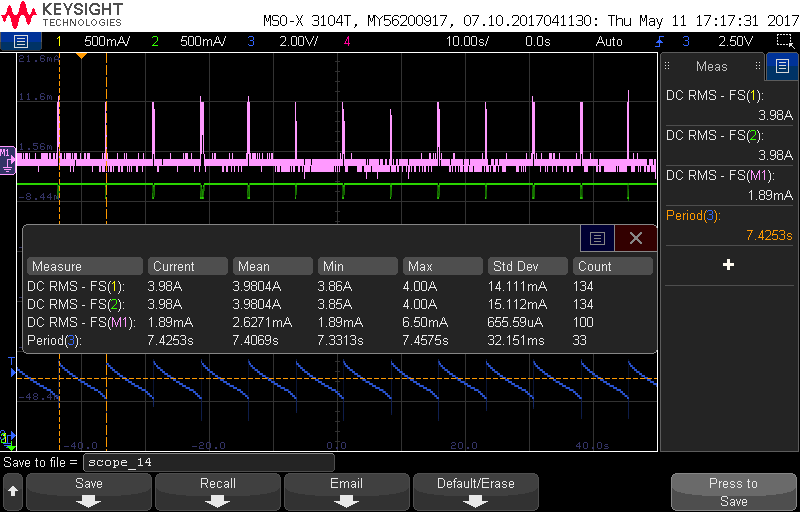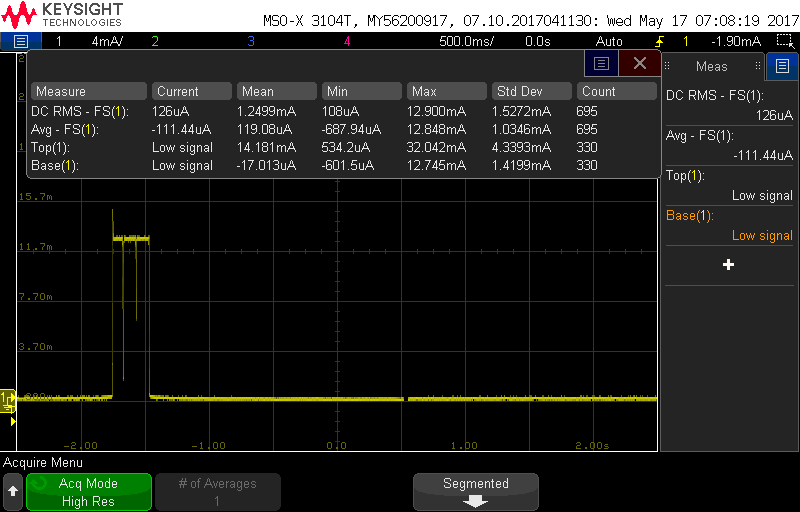Light Sleep, Low Power ( < 2.4mA) IoT Proof of concept
Hi all.
I had been trying to find source code that would enable me to run an ESP8266 from an NCR18650 for a respectable amount of time and still handle requests.
I had read many forums with topics that end before they got to any solution, with was the theme of anything i researched for this project.
However, i have sitting next to me, an ESP8266 running from an NCR18650 and only using 2.4mA RMS over 100 seconds.
It will respond to an HTTP request within 5 or so seconds.
My Git repository has the working proof of concept source code:
https://github.com/leon-v/ESP8266-NONOS ... -WiFi-Node
NOTE: This is very unpolished and a copy of my development envioment. I use Windows, Compile in the bas console for windows, and since the NONOS 2.0 makefiles require the product to be in the root of the SDK, the whole SDK i use is thre too.
The latest source is in src_dev.
I had been trying to find source code that would enable me to run an ESP8266 from an NCR18650 for a respectable amount of time and still handle requests.
I had read many forums with topics that end before they got to any solution, with was the theme of anything i researched for this project.
However, i have sitting next to me, an ESP8266 running from an NCR18650 and only using 2.4mA RMS over 100 seconds.
It will respond to an HTTP request within 5 or so seconds.
My Git repository has the working proof of concept source code:
https://github.com/leon-v/ESP8266-NONOS ... -WiFi-Node
NOTE: This is very unpolished and a copy of my development envioment. I use Windows, Compile in the bas console for windows, and since the NONOS 2.0 makefiles require the product to be in the root of the SDK, the whole SDK i use is thre too.
The latest source is in src_dev.

